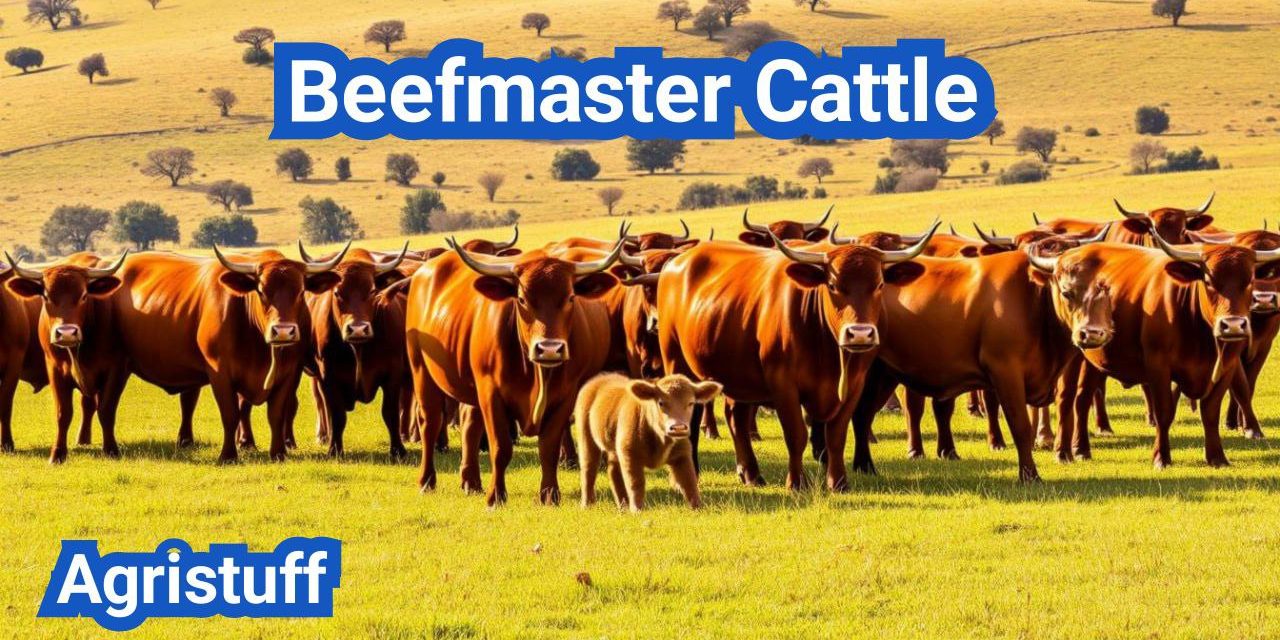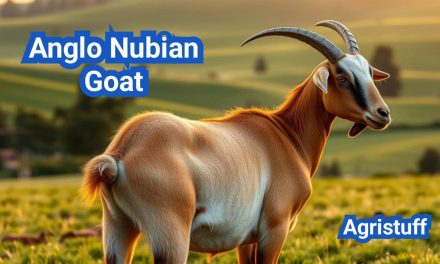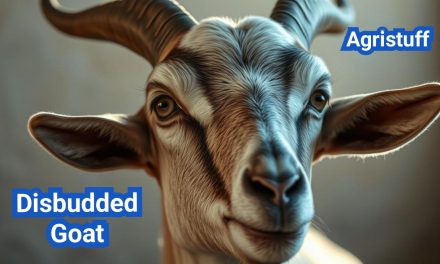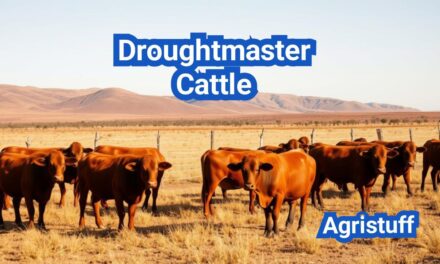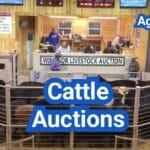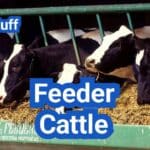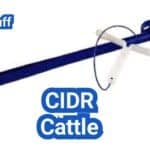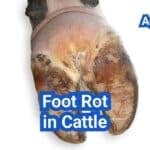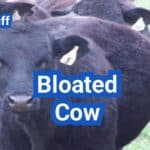The Beefmaster breed has gained recognition for its superior genetics in beef farming. Developed in the early 20th century by Tom Lasater in Texas, this breed is a result of careful genetic selection.
The breed’s genetic composition is approximately 50% Brahman, 25% Hereford, and 25% Shorthorn, making it ideal for sustainable beef farming in the USA. The blend of these genetics provides the breed with its desirable traits, such as hardiness and fast growth rate.
This makes Beefmaster cattle a popular choice for livestock farming in the United States, contributing to the country’s beef production.
Key Takeaways
- Beefmaster breed is known for its superior genetics in beef farming.
- The breed was developed in Texas in the early 20th century.
- Beefmaster cattle are a blend of Brahman, Hereford, and Shorthorn genetics.
- The breed is ideal for sustainable beef farming in the USA.
- Beefmaster cattle are a popular choice for livestock farming in the United States.
The Origin and History of Beefmaster Cattle
The Beefmaster cattle breed has a rich history that began in the early 20th century. Ed C. Lasater initiated the breeding program in 1908 by introducing Brahman bulls to his commercial herd of Hereford and Shorthorn cattle. This marked the beginning of a new era in cattle breeding.
Tom Lasater’s Vision and Breeding Program
After Ed C. Lasater’s death in 1930, his son Tom Lasater continued the breeding program. Tom Lasater’s vision was to create a breed that combined the best traits of Hereford cattle, Shorthorn, and Brahman cattle. He focused on developing a hardy, productive, and fertile breed that could thrive in various environments.
“The goal was to produce cattle that were not only robust but also efficient in terms of growth and reproduction.”
Development as the First American Composite Breed
Beefmaster cattle were developed as the first American composite breed, combining the genetics of Hereford, Shorthorn, and Brahman cattle. This unique blend provided the breed with hybrid vigor, making it more resilient and productive. The development process involved careful selection and breeding practices to achieve the desired traits.
| Breed Component | Contribution |
|---|---|
| Hereford | Known for their high-quality beef and docile nature. |
| Shorthorn | Contributed to the breed’s hardiness and milking ability. |
| Brahman | Added heat tolerance and resistance to insects. |
Evolution of the Breed Since 1930s
Since the 1930s, the Beefmaster breed has continued to evolve through selective breeding practices. The breed has been refined to enhance its growth rate, fertility, and carcass quality. Today, Beefmaster cattle are recognized for their superior genetics and are used in various beef production systems across the United States.
The evolution of Beefmaster cattle is a testament to the innovative breeding practices initiated by the Lasater family. Their commitment to developing a robust and productive breed has had a lasting impact on the cattle industry.
Understanding Beefmaster Cattle Genetics

Understanding the genetics behind Beefmaster cattle is essential for breeders looking to improve their herds. Beefmaster cattle are a result of a carefully planned breeding program that combines the strengths of three distinct breeds: Hereford, Shorthorn, and Brahman.
The Three-Way Cross: Hereford, Shorthorn, and Brahman
The Beefmaster breed was developed using a three-way cross between Hereford, Shorthorn, and Brahman cattle. This cross combines the hardiness and heat tolerance of Brahman, the carcass quality of Hereford and Shorthorn, and the fertility and milk production of these breeds.
Genetic Composition and Inheritance Patterns
Beefmaster cattle are typically composed of approximately 50% Brahman, 25% Hereford, and 25% Shorthorn genetics. This genetic composition is designed to maximize hybrid vigor, resulting in improved fertility, growth rate, and hardiness.
The inheritance patterns in Beefmaster cattle follow the principles of Mendelian genetics, where the traits from the parent breeds are passed down to the offspring. Breeders can select for desirable traits such as weight, fertility, and conformation.
| Breed Component | Percentage | Key Traits Contributed |
|---|---|---|
| Brahman | 50% | Heat tolerance, hardiness |
| Hereford | 25% | Carcass quality, temperament |
| Shorthorn | 25% | Fertility, milk production |
Modern Genetic Improvements and Research
Modern genetic improvements in Beefmaster cattle involve the use of advanced reproductive technologies such as artificial insemination and embryo transfer. These technologies allow breeders to accelerate genetic progress and improve the overall quality of their herds.
Ongoing research in cattle genetics continues to identify new markers for desirable traits, enabling breeders to make more informed selection decisions. This research is crucial for the continued improvement of Beefmaster cattle and their adaptation to changing environmental conditions.
Key Physical Characteristics of Beefmaster Cattle
The Beefmaster breed is recognized for its unique physical characteristics, which contribute to its hardiness and productivity. Beefmaster cattle are a result of careful breeding to produce a robust and adaptable animal.
Physical Appearance and Breed Standards
Beefmaster cattle are known for their moderate size and muscular build, making them well-suited for a variety of farming conditions. Their physical appearance is characterized by a strong bone structure and a deep, well-sprung ribcage. The breed standards emphasize a compact, trim body with a well-defined muscular tone.
Size, Weight, and Growth Patterns
Beefmaster cattle are generally moderate in size. Males typically weigh between 1,800 and 2,200 pounds, while females weigh between 1,100 and 1,300 pounds. Their growth patterns are influenced by genetics, nutrition, and management practices. Beefmasters are known for their efficient growth rate, making them a popular choice among beef producers.
| Category | Weight Range (lbs) |
|---|---|
| Males | 1,800 – 2,200 |
| Females | 1,100 – 1,300 |
Color Variations Including Black Beefmaster
Beefmaster cattle are predominantly red in color, ranging from light red to dark red. Some individuals may exhibit white mottling on their faces. While the breed is not typically associated with black coloration, there are instances of Black Beefmaster cattle, which are a result of specific breeding practices. The color variations do not affect the breed’s hardiness or productivity.
“The diversity in color among Beefmaster cattle adds to their appeal, with the breed offering a range of visually striking animals.” –
A renowned cattle breeder
In summary, the physical characteristics of Beefmaster cattle, including their size, weight, and color variations, make them a versatile and valuable breed for beef production. Their robust build and efficient growth rate contribute to their popularity among ranchers and farmers.
The Six Essential Traits of Beefmaster Cattle

Understanding the six essential traits of Beefmaster cattle is crucial for farmers looking to optimize their cattle’s productivity and profitability. These traits are the foundation upon which the breed’s superior performance is built.
Weight and Growth Efficiency
Beefmaster cattle are known for their impressive growth rates and efficient weight gain. Weight and growth efficiency are critical factors that contribute to the breed’s popularity among cattle producers. By focusing on these traits, breeders can ensure that their cattle reach market weight quickly, reducing the overall cost of production.
Conformation and Carcass Quality
The conformation and carcass quality of Beefmaster cattle are among their most valuable attributes. Good conformation not only enhances the animal’s overall health and functionality but also improves the quality of the carcass, making it more desirable to consumers. This trait is essential for producers aiming to supply high-quality beef to the market.
Milk Production and Calf Development
Milk production is another vital trait of Beefmaster cattle, as it directly impacts the growth and development of their calves. Cows with high milk production capabilities can nourish their calves more effectively, leading to healthier and more robust offspring. This trait is particularly important in beef production systems where calf growth rates are a key performance indicator.
Fertility and Reproductive Efficiency
Fertility and reproductive efficiency are fundamental to the long-term success of any cattle operation. Beefmaster cattle have been bred to excel in these areas, with a strong focus on ensuring that cows are fertile and capable of producing calves consistently. High reproductive efficiency reduces the need for replacement animals and minimizes the costs associated with breeding programs.
The six essential traits of Beefmaster cattle—weight, conformation, milking ability, fertility, hardiness, and disposition—are interlinked and collectively contribute to the breed’s overall productivity and profitability. By selecting for these traits, breeders can develop cattle that not only perform well in various environments but also meet the demands of the beef market.
Advantages of Raising Beefmaster Cattle
Raising Beefmaster cattle offers several benefits that contribute to sustainable beef farming practices. These cattle are known for their hardiness, fertility, and efficiency, making them an attractive choice for cattle producers.
Heat Tolerance and Environmental Adaptability
Beefmaster cattle are particularly noted for their heat tolerance, a trait inherited from their Brahman ancestry. This makes them well-suited for farming in hot and humid climates. As Tom Lasater, the founder of the Beefmaster breed, once said, “The ability of Beefmaster cattle to thrive in challenging environmental conditions is one of their most significant advantages.”
“Cattle that can adapt to various environmental conditions are crucial for the future of sustainable beef production.”
Their adaptability to different environments also reduces the need for extensive infrastructure to protect them from extreme weather conditions, thereby lowering production costs.
Superior Fertility and Maternal Traits
Beefmaster cattle are recognized for their superior fertility and maternal traits. The breed’s females are known to be highly fertile and capable of producing calves with high survival rates. This is crucial for maintaining a productive and sustainable cattle operation.
The maternal instinct of Beefmaster cows is another significant advantage. They are known to be protective of their calves, ensuring a higher survival rate and healthier calves at weaning.
Excellent Growth Rates and Feed Efficiency
Beefmaster cattle are bred for their excellent growth rates and feed efficiency. They are capable of achieving market weight quickly, which is economically beneficial for producers. Their feed efficiency means they can thrive on a variety of diets, making them versatile for different farming systems.
This efficiency also translates into lower feed costs and reduced environmental impact, as fewer resources are required to produce the same amount of beef compared to less efficient breeds.
Hybrid Vigor Benefits in Commercial Operations
The hybrid vigor of Beefmaster cattle is another key advantage. As a composite breed, they benefit from the genetic diversity of their parent breeds (Hereford, Shorthorn, and Brahman), resulting in healthier and more robust animals. This hybrid vigor is particularly beneficial in commercial operations, where it can lead to improved productivity and profitability.
By leveraging the strengths of their parent breeds, Beefmaster cattle offer a robust solution for cattle producers looking to enhance their operations’ efficiency and sustainability.
How to Select Quality Beefmaster Cattle for Your Herd

When it comes to choosing Beefmaster cattle for your operation, focusing on the Six Essentials can guide your decision-making. The Six Essentials – weight, conformation, milking ability, fertility, disposition, and hardiness – are foundational in evaluating the quality of Beefmaster cattle.
Evaluating Bulls for Breeding Programs
Selecting a superior bull is critical for the genetic improvement of your Beefmaster herd. Key factors to consider include the bull’s fertility, growth rate, and conformation. A well-chosen bull can significantly enhance the productivity and quality of your herd.
Key characteristics to evaluate in bulls:
- Fertility and libido
- Growth rate and size
- Muscling and carcass quality
- Disposition and temperament
Selecting Productive Beefmaster Cows and Heifers
Productive females are the backbone of any cattle operation. When selecting Beefmaster cows and heifers, look for individuals with strong maternal traits, good milking ability, and a history of producing high-quality calves.
| Trait | Description | Importance |
|---|---|---|
| Milking Ability | Adequate milk production for calf growth | High |
| Fertility | Regular calving interval | High |
| Disposition | Docile temperament | Medium |
Assessing Calves for Future Potential
Early assessment of calves can help identify those with the most potential for future breeding or market purposes. Factors to consider include growth rate, conformation, and overall health.
Working with Reputable Beefmaster Breeders
Partnering with reputable Beefmaster breeders can provide valuable insights and access to high-quality cattle. Look for breeders who are members of the Beefmaster Breeders United and who prioritize the Six Essentials in their breeding programs.
By focusing on these key areas and working with reputable breeders, you can build a high-quality Beefmaster herd that meets your operation’s needs.
Starting Your Beefmaster Cattle Operation

The journey to establishing a thriving Beefmaster cattle farm begins with understanding the critical elements of infrastructure, herd composition, and resource allocation. As a new breeder, it’s essential to approach this venture with a comprehensive plan.
Essential Infrastructure and Land Requirements
A successful Beefmaster cattle operation starts with the right infrastructure. This includes adequate land for grazing and expansion, as well as facilities for handling and managing the cattle. The land should be suitable for Beefmaster cattle, with adequate pasture and water supply.
Adequate fencing is also crucial to ensure the cattle remain contained and to protect the investment. The quality and durability of the fencing can significantly impact the overall efficiency of the operation.
Initial Herd Composition Strategies
Determining the initial herd composition is a critical decision. It involves selecting the right mix of cattle that can thrive in the given environment and meet the operation’s goals. Factors such as age, breed purity, and health status should be considered.
According to Tom Lasater, a pioneer in Beefmaster breeding, “The key to a successful cattle operation lies in the quality of the foundation stock.” This emphasizes the importance of selecting high-quality cattle for the initial herd.
Equipment and Resources Needed
The necessary equipment for a Beefmaster cattle operation includes handling facilities, feeding equipment, and veterinary supplies. The scale and type of equipment will depend on the size of the operation and the specific needs of the herd.
- Handling facilities for safe and efficient cattle management
- Feeding equipment that can accommodate the nutritional needs of the herd
- Veterinary supplies for maintaining herd health
Financial Planning for New Breeders
Financial planning is a critical component of starting a Beefmaster cattle operation. It involves budgeting for the initial investment, ongoing expenses, and potential contingencies. New breeders should consider costs such as land preparation, cattle purchase, equipment, and veterinary care.
Efficient financial planning can help ensure the long-term sustainability of the operation. It’s also important to explore available financial assistance programs and resources for cattle breeders.
Nutrition and Feeding Programs for Beefmaster Cattle
A comprehensive feeding strategy is crucial for Beefmaster cattle to achieve their full genetic potential. Nutrition plays a significant role in their growth, productivity, and overall health.
Dietary Requirements at Different Life Stages
Beefmaster cattle have different dietary needs at various stages of their life cycle. Calves require a diet rich in protein and energy to support their rapid growth and development. As they mature, their nutritional needs shift to support maintenance, reproduction, and lactation.
For instance, during the weaning phase, calves need a nutrient-dense diet to adjust to the transition from milk to solid foods. This can include high-quality hay, grains, and supplements. As they grow into yearlings, their diet should continue to support growth while also considering the onset of reproductive maturity.
Pasture Management for Optimal Growth
Effective pasture management is critical for Beefmaster cattle. Rotational grazing is a recommended practice to maintain pasture health and productivity. This involves dividing pastures into smaller sections and rotating cattle through them to avoid overgrazing.
Pasture quality and quantity directly impact the nutritional intake of Beefmaster cattle. Ensuring that pastures are well-maintained and that cattle have access to clean water is essential for their nutritional well-being.
Supplemental Feeding Strategies
In addition to pasture grazing, Beefmaster cattle may require supplemental feeding, especially during periods of nutritional deficiency or when pasture quality is poor. Supplements can include minerals, vitamins, and energy sources tailored to the specific needs of the cattle.
The decision to implement supplemental feeding should be based on the nutritional status of the cattle, the quality of the available forage, and the production goals of the operation.
Winter and Drought Feeding Considerations
Beefmaster cattle require special nutritional considerations during winter and drought conditions. Conserved forages such as hay, and strategic supplementation can help maintain their nutritional status during these challenging periods.
During winter, the focus should be on maintaining body condition and supporting the nutritional needs of pregnant or lactating cows. In drought conditions, strategies such as early weaning and alternative feeding sources may be necessary to manage the herd effectively.
Health Management for Beefmaster Herds

Effective health management is crucial for the well-being and productivity of Beefmaster herds. A comprehensive health management plan involves several key components, including preventative health protocols, vaccination programs, and strategies for addressing common health challenges.
Preventative Health Protocols
Preventative health protocols are the foundation of a successful health management plan. These protocols include regular monitoring of the herd’s health, maintaining a clean and safe environment, and implementing biosecurity measures to prevent the introduction and spread of diseases.
Key preventative measures include:
- Regular veterinary check-ups
- Proper nutrition and feeding practices
- Adequate shelter and living conditions
- Effective waste management
Vaccination and Parasite Control Programs
Vaccination programs are essential for protecting Beefmaster cattle from diseases. The specific vaccines used will depend on the region and the prevalent diseases in the area. Consulting with a veterinarian is crucial to determine the most effective vaccination program for your herd.
Parasite control is another critical aspect of health management. Internal parasites, such as worms, can significantly impact the health and productivity of the cattle. Implementing a parasite control program that includes regular deworming and monitoring for parasite resistance is vital.
Common Health Challenges and Solutions
Beefmaster cattle can be susceptible to various health challenges, including respiratory diseases, reproductive issues, and nutritional deficiencies. Understanding these challenges and implementing strategies to mitigate them is crucial for maintaining a healthy herd.
Some common health challenges and their solutions include:
- Respiratory diseases: Implementing vaccination programs and reducing stress on the animals
- Reproductive issues: Ensuring proper nutrition and reproductive health management
- Nutritional deficiencies: Providing a balanced diet and supplementing as necessary
Working with Veterinarians for Herd Health
Working closely with a veterinarian is essential for developing and implementing an effective health management plan. Veterinarians can provide valuable guidance on preventative health protocols, vaccination programs, and parasite control strategies.
Regular veterinary check-ups and consultations can help identify potential health issues early, allowing for prompt intervention and minimizing the risk of disease outbreaks.
Breeding Strategies for Beefmaster Cattle

Effective breeding strategies are crucial for the success of Beefmaster cattle operations. A well-planned breeding program can significantly enhance the productivity and profitability of a cattle farm.
Developing a Successful Breeding Program
Developing a successful breeding program for Beefmaster cattle involves several key considerations. Breeders must evaluate their goals, whether it’s to improve fertility, enhance growth rates, or increase milk production. Genetic selection plays a critical role in achieving these objectives.
“The key to a successful breeding program is understanding the genetics of your cattle and making informed decisions based on that knowledge,” says a renowned cattle breeder.
Artificial Insemination vs. Natural Breeding
Beefmaster cattle breeders have the option to use either artificial insemination (AI) or natural breeding. AI offers several advantages, including access to superior genetics from top bulls and reduced risk of disease transmission. However, it requires more labor and technical expertise.
- Advantages of AI: Access to superior genetics, reduced disease risk
- Disadvantages of AI: Requires more labor and technical expertise
Crossbreeding with Other Cattle Breeds
Crossbreeding Beefmaster cattle with other breeds can introduce hybrid vigor, improving overall herd performance. This strategy can be particularly effective in enhancing traits such as growth rate and carcass quality.
| Breed | Traits Improved by Crossbreeding |
|---|---|
| Angus | Carcass quality, marbling |
| Charolais | Growth rate, muscling |
Seasonal Breeding Considerations
Seasonal breeding strategies can help Beefmaster cattle breeders synchronize their calving periods with optimal pasture conditions, enhancing calf survival and growth. This approach requires careful planning and management of the breeding season.
By adopting a well-informed breeding strategy, Beefmaster cattle breeders can improve their herd’s performance, increase productivity, and enhance profitability.
Improving Your Existing Herd with Beefmaster Genetics

The Beefmaster breed offers a unique genetic package that can significantly improve the quality and productivity of your cattle herd. By integrating Beefmaster genetics, cattle producers can enhance their herd’s performance, hardiness, and overall profitability.
Integrating Beefmaster Bulls into Different Breed Herds
One of the most effective ways to improve your existing herd is by introducing Beefmaster bulls. These bulls bring superior genetics that can enhance growth rates, fertility, and overall herd health. When selecting Beefmaster bulls, consider factors such as:
- Genetic diversity to avoid inbreeding and enhance hybrid vigor.
- Proven performance records to ensure the bull’s genetics are beneficial.
- Physical characteristics that align with your breeding goals.
Upgrading Commercial Cows to Beefmaster Standards
Upgrading your commercial cows to Beefmaster standards involves crossbreeding with Beefmaster bulls to introduce desirable traits such as improved fertility and growth efficiency. This process can be done in stages, starting with:
- Crossbreeding your commercial cows with Beefmaster bulls to produce F1 offspring.
- Retaining the F1 females and breeding them back to Beefmaster bulls to achieve further genetic improvement.
This systematic approach helps in gradually enhancing your herd’s genetics.
Measuring Genetic Improvement Over Generations
To measure the success of integrating Beefmaster genetics, it’s crucial to track key performance indicators (KPIs) over generations. These KPIs may include:
- Growth rates and weaning weights.
- Fertility and calving rates.
- Carcass quality and yield.
By monitoring these metrics, producers can assess the effectiveness of their breeding program and make informed decisions.
Case Studies of Successful Herd Improvements
Several cattle producers have successfully improved their herds using Beefmaster genetics. For instance, a producer in Texas reported a significant increase in weaning weights and fertility after introducing Beefmaster bulls into their herd. Such case studies demonstrate the potential benefits of incorporating Beefmaster genetics into your breeding program.
By following these strategies and leveraging the strengths of Beefmaster cattle, producers can enhance their herd’s productivity and profitability.
Regional Considerations for Beefmaster Cattle in the USA

Regional considerations play a crucial role in the successful management of Beefmaster cattle across different parts of the United States. The breed’s adaptability is one of its strongest attributes, allowing it to thrive in various climates and regions.
Beefmaster Cattle in Texas and the Southwest
Texas and the Southwest are significant regions for Beefmaster cattle, where the breed’s heat tolerance and hardiness are particularly valuable. The dry climate and vast ranchlands make it an ideal location for raising Beefmaster cattle.
Heat tolerance is a key factor in the Southwest, where temperatures can soar during the summer months. Beefmaster cattle, with their Brahman influence, are well-equipped to handle such conditions.
Adaptations for Southeastern Climates
The Southeastern United States presents a different set of challenges, primarily due to its humid climate and potential for parasite infestations. Beefmaster cattle in this region benefit from their Brahman genetics, which provide resistance to ticks and other parasites.
Effective parasite control measures are essential in the Southeast. Regular monitoring and strategic deworming programs help maintain the health and productivity of Beefmaster herds.
Northern Climate Management Strategies
In the Northern United States, Beefmaster cattle face colder temperatures and potentially harsh winter conditions. Management strategies in this region focus on providing adequate shelter, nutrition, and health care to ensure the cattle’s well-being.
Winter feeding programs are critical, as the cold weather increases the cattle’s nutritional needs. Providing high-quality hay and ensuring access to clean water are essential practices.
Regional Performance Differences
Performance differences among Beefmaster cattle can be observed across different regions due to varying environmental conditions. Factors such as climate, nutrition, and management practices influence the breed’s growth rates, fertility, and overall productivity.
| Region | Key Challenges | Management Strategies |
|---|---|---|
| Southwest | Heat stress, drought | Shade provision, water management |
| Southeast | Parasite infestations, humidity | Parasite control, rotational grazing |
| Northern | Cold temperatures, winter nutrition | Winter feeding programs, shelter provision |
According to Beefmaster Breeders United, “The adaptability of Beefmaster cattle makes them an excellent choice for a wide range of production environments.” This adaptability is a testament to the breed’s versatility and its potential for success in various regional settings across the USA.
Marketing and Selling Beefmaster Cattle

Marketing Beefmaster cattle requires a multi-faceted approach that includes developing a reputation as a quality breeder and leveraging various sales channels. To stand out in the competitive cattle breeding market, it’s essential to adopt effective marketing strategies that highlight the unique characteristics of Beefmaster cattle.
Developing a Reputation as a Quality Breeder
Establishing a reputation as a quality breeder is fundamental to successful Beefmaster cattle marketing. This involves breeding high-quality cattle that meet or exceed breed standards, maintaining transparent business practices, and engaging with potential buyers through various channels. By focusing on the genetic superiority and desirable traits of Beefmaster cattle, breeders can build trust and credibility within the industry.
To further enhance their reputation, breeders should participate in cattle shows and events, where they can showcase their animals and network with other professionals. This not only helps in demonstrating the quality of their cattle but also provides opportunities to receive feedback from peers and potential customers.
Show Cattle Preparation and Participation
Preparing Beefmaster cattle for shows is an art that requires attention to detail and a deep understanding of what judges look for in the breed. Show cattle preparation involves selecting the right animals, ensuring they are well-groomed, and training them to present their best characteristics. Participation in cattle shows can significantly boost a breeder’s reputation and provide a platform to market their cattle to a targeted audience.
Direct Marketing vs. Auction Sales
Beefmaster breeders have the option to market their cattle through direct marketing or auction sales. Direct marketing allows breeders to sell their cattle directly to buyers, potentially increasing profit margins by eliminating intermediary costs. Auction sales, on the other hand, provide a platform to reach a wider audience and can drive up prices due to competitive bidding.
Each method has its advantages, and the choice between them depends on the breeder’s goals, the quality and uniqueness of their cattle, and their target market.
Online Marketing Strategies for Beefmaster Breeders
In today’s digital age, online marketing strategies are crucial for reaching potential buyers and promoting Beefmaster cattle. This includes creating a professional website, engaging in social media, and utilizing online advertising. By leveraging these tools, breeders can increase their visibility, attract new customers, and ultimately drive sales.
Effective online marketing also involves showcasing the unique selling points of Beefmaster cattle, such as their hardiness, fertility, and growth rate, through compelling content and visuals.
Beefmaster Seedstock Programs and Industry Resources
The success of Beefmaster cattle operations is closely tied to effective seedstock programs, which are supported by various industry resources and associations.
Beefmaster Breeders United and Other Associations
Beefmaster Breeders United (BBU) is a pivotal organization in the Beefmaster industry, providing breeders with essential tools and resources. BBU’s efforts in breed improvement are complemented by other associations that work together to advance Beefmaster cattle.
Some key functions of these associations include:
- Maintaining breed standards and registries
- Providing performance testing and record-keeping systems
- Offering educational resources for breeders
- Organizing annual events and sales for Beefmaster enthusiasts
Performance Testing and Record Keeping Systems
Performance testing is a critical component of Beefmaster seedstock programs, allowing breeders to make informed decisions based on data-driven insights. Record-keeping systems are used to track the performance of individual animals, enabling breeders to identify superior genetics.
| Performance Trait | Description | Importance |
|---|---|---|
| Growth Rate | Measures the rate at which cattle gain weight | High |
| Reproductive Efficiency | Assesses the fertility and reproductive health of cattle | High |
| Carcass Quality | Evaluates the quality of the cattle’s carcass | Medium |
Educational Resources and Networking Opportunities
Beyond performance testing, Beefmaster associations offer a range of educational resources, including workshops, webinars, and publications. These resources help breeders stay updated on best practices and network with other professionals in the industry.
Annual Events and Sales for Beefmaster Enthusiasts
Annual events and sales are crucial for the Beefmaster community, providing opportunities for breeders to showcase their cattle, share knowledge, and conduct business. These events are vital for the continued growth and improvement of the breed.
The Future of Beefmaster Cattle in American Agriculture
Beefmaster cattle are set to play a pivotal role in shaping the future of American agriculture, driven by their exceptional hardiness, fertility, and productivity. As the agricultural sector continues to evolve, the demand for sustainable beef farming practices is on the rise, positioning Beefmaster cattle as a key player in this movement.
The breed’s adaptability to various climates and its resistance to diseases make it an attractive choice for farmers looking to improve the sustainability of their operations. With Beefmaster cattle breeders continually working to enhance the breed’s genetics, the future of Beefmaster cattle in American agriculture looks promising.
As the industry moves towards more sustainable practices, the role of Beefmaster cattle in American agriculture will likely expand, contributing to the development of sustainable beef farming methods across the USA. The ongoing efforts of Beefmaster cattle breeders will be crucial in this endeavor, driving innovation and excellence in the breed.
FAQ
What is the origin of Beefmaster Cattle?
Beefmaster Cattle originated in the 1930s through Tom Lasater’s breeding program, which aimed to create a robust and productive cattle breed suitable for the challenging environments of the American Southwest.
What are the genetic components of Beefmaster Cattle?
Beefmaster Cattle are a composite breed resulting from a three-way cross between Hereford, Shorthorn, and Brahman breeds, combining the hardiness of Brahman, the maternal traits of Hereford and Shorthorn, and achieving hybrid vigor.
What are the key physical characteristics of Beefmaster Cattle?
Beefmaster Cattle are known for their robust build, heat tolerance, and varied color patterns, including black Beefmaster. They exhibit a range of sizes and weights, with mature cows typically weighing between 1,000 to 1,300 pounds.
What are the Six Essential Traits of Beefmaster Cattle?
The Six Essential Traits are weight, conformation, milk production, fertility, disposition, and hardiness, which together define the productivity and profitability of Beefmaster Cattle.
Why are Beefmaster Cattle considered advantageous for beef farming?
Beefmaster Cattle offer several advantages, including heat tolerance, superior fertility, excellent growth rates, and hybrid vigor, making them ideal for sustainable beef farming in challenging environments.
How do I select quality Beefmaster Cattle for my herd?
Selecting quality Beefmaster Cattle involves evaluating bulls for breeding potential, choosing productive females based on their reproductive history and milk production, and assessing calves for future potential, while working with reputable breeders.
What are the nutritional requirements for Beefmaster Cattle?
Beefmaster Cattle have varying dietary needs across different life stages, requiring careful pasture management, strategic supplemental feeding, and consideration of seasonal feeding challenges like winter and drought.
How can I manage the health of my Beefmaster herd?
Effective health management for Beefmaster herds includes preventative health protocols, vaccination and parasite control programs, addressing common health issues, and collaborating with veterinarians.
What breeding strategies are effective for Beefmaster Cattle?
Successful breeding strategies for Beefmaster Cattle include developing a well-planned breeding program, considering artificial insemination versus natural breeding, crossbreeding with other breeds, and adapting to seasonal breeding considerations.
How can Beefmaster genetics improve my existing herd?
Integrating Beefmaster bulls, upgrading commercial cows to Beefmaster standards, and measuring genetic improvement over generations can significantly enhance the productivity and profitability of your herd.
Are Beefmaster Cattle suitable for all regions of the USA?
While Beefmaster Cattle are adaptable, their suitability varies by region. They thrive in the Southwest and Southeast but require specific management strategies in northern climates.
How can I market and sell Beefmaster Cattle effectively?
Effective marketing and sales strategies include developing a reputation as a quality breeder, preparing show cattle, choosing between direct marketing and auction sales, and leveraging online marketing.
What resources are available for Beefmaster breeders?
Beefmaster breeders can access various resources, including Beefmaster Breeders United, performance testing and record-keeping systems, educational materials, and networking opportunities through annual events and sales.
Beefmaster Cattle: Overview
Introduction to Beefmaster Cattle
Beefmaster cattle are a premier American beef cattle breed, renowned for their superior genetics, adaptability, and profitability in beef farming. Developed in the early 20th century, Beefmasters combine the best traits of Brahman, Hereford, and Shorthorn cattle, making them one of the most efficient and resilient breeds for modern ranchers 15. Their unique Six Essentials selection criteria—weight, conformation, milk production, fertility, hardiness, and disposition—ensure they excel in both maternal and carcass qualities. Whether you’re a commercial rancher or a seedstock producer, Beefmaster cattle offer unmatched advantages in sustainable beef production.
For more details on Beefmaster history, visit The Cattle Site.
The History and Development of Beefmaster Cattle
The Beefmaster breed originated from the visionary breeding program of Tom Lasater in Texas, blending Brahman (50%), Hereford (25%), and Shorthorn (25%) genetics to create a hardy, high-performing composite breed 15. Unlike traditional breeds, Lasater focused solely on economically vital traits, ignoring non-essential features like coat color or horn status. This rigorous selection process led to cattle that thrive in harsh conditions, from the scorching Texas heat to Colorado’s freezing winters.
By 1954, the U.S. Department of Agriculture officially recognized Beefmaster as a pure breed, solidifying its place in American beef farming 5. Today, Beefmaster cattle rank as the fourth-largest beef breed in the U.S., with a growing presence in South Africa and Brazil 110.
Learn more about Beefmaster genetics at Oklahoma State University.
Key Traits of Beefmaster Cattle
Beefmaster cattle are celebrated for their heat tolerance, fertility, and rapid growth, making them ideal for sustainable beef farming. Here’s what sets them apart:
- Heat and Drought Resistance – Their Brahman heritage ensures they graze efficiently even in extreme heat, unlike other breeds that seek shade 1.
- Superior Fertility – Beefmaster cows have a short inter-calving period (around 397 days) and often produce their first calves by 14 months 10.
- High Weaning Weights – Calves grow quickly, delivering impressive weaning weights that boost profitability 1.
- Disposition – Known for their docile temperament, Beefmasters are easier to handle, reducing stress for both cattle and ranchers 5.
For insights on Beefmaster traits, explore Beefmaster Breeders United.
Why Beefmaster Cattle Excel in Sustainable Beef Farming
Sustainability is a cornerstone of modern beef production, and Beefmaster cattle are perfectly suited for eco-conscious ranchers. Their hardiness reduces reliance on antibiotics, while their efficient grazing minimizes land degradation 12. Additionally, their 63% retained heterosis (hybrid vigor) enhances traits like longevity and maternal ability, outperforming other composite breeds 2.
Many U.S. ranchers, including Santa Ana Ranch in Texas, utilize Beefmasters for their resilience in extreme weather, aligning with sustainable farming goals 15.
Discover sustainable beef practices at The Nature Conservancy.
Beefmaster Cattle in Texas: A Rancher’s Top Choice
Texas remains the epicenter of Beefmaster breeding, with renowned ranches like Emmons Beefmasters and DL Texas Ranch producing elite seedstock 76. These operations emphasize:
- Performance Testing – Ensuring bulls and heifers meet strict growth and fertility standards.
- Show Ring Success – Emmons Ranch has produced multiple National Champion Bulls and Miss Beefmaster America winners 7.
- Commercial Profitability – Beefmaster-cross calves often command premium prices in feedlots due to their rapid weight gain 10.
For top Beefmaster genetics, visit DL Texas Ranch.
Beefmaster Seedstock Programs and Genetic Advancements
Leading Beefmaster breeders invest in cutting-edge genetics to enhance carcass quality and feed efficiency. Programs like Beefmaster Breeders United (BBU) provide ranchers with data-driven EPDs (Expected Progeny Differences) for traits like marbling and calving ease 26.
Notable sires like NG McAlester 616F and MR CJ’s Fireball are revolutionizing the breed with elite growth and maternal genetics 6.
Explore BBU’s genetic resources at Beefmaster Breeders United.
Final Thought
Beefmaster cattle represent the future of sustainable, profitable beef farming, combining unmatched hardiness, fertility, and growth efficiency. Whether you’re in Texas or beyond, integrating Beefmaster genetics into your herd can elevate productivity and resilience. For ranchers seeking a breed that excels in both heat tolerance and carcass quality, Beefmasters are the ultimate choice.
For further reading on Beefmaster cattle, check out The Cattle Site.
Conclusion Of: Beefmaster Cattle | Superior Genetics for Beef Farming
Beefmaster cattle are a distinguished American beef breed recognized for their superior genetics, resilience, and economic value in beef farming. Developed in Texas, Beefmasters are a composite breed combining Brahman, Hereford, and Shorthorn genetics, offering ranchers a reliable option for profitable and sustainable beef production.
What Are Beefmaster Cattle?
Beefmaster cattle are a hybrid beef breed originally created by the Lasater Ranch in the United States during the 1930s. The breed was designed to optimize six essential traits: weight, conformation, milk production, fertility, hardiness, and disposition.
Historical Background of Beefmaster Cattle
Beefmasters were officially recognized as a breed in 1954. Tom Lasater, the breed’s founder, aimed to create cattle suited for the harsh climates of Texas and the American Southwest, focusing on natural selection rather than artificial standards.
Physical Characteristics of Beefmaster Cattle
Beefmaster cattle display a variety of colors including red, dun, and sometimes black. They have large, muscular frames with loose skin and moderate to large-sized ears typical of Brahman-influenced breeds. Bulls can weigh between 2,200 to 2,800 pounds, while cows range from 1,200 to 1,800 pounds.
Growth Rate and Beef Quality
Beefmaster cattle grow quickly, producing high-quality beef with good marbling and tenderness. The breed’s efficient feed conversion and rapid weight gain make it attractive to commercial beef producers in the United States.
Economic Benefits of Raising Beefmaster Cattle
Farmers value Beefmaster cattle for:
- High fertility rates
- Efficient grazing and feed utilization
- Strong adaptability to heat and drought
- Low maintenance costs relative to beef output
Adaptability and Environmental Resistance
Due to Brahman genetics, Beefmaster cattle tolerate heat, insects, and diseases better than many European breeds. Their adaptability allows them to thrive in diverse environments, from hot and humid regions to semi-arid zones.
Beefmaster Cattle Feeding and Nutrition
Beefmaster cattle perform best on pasture-based diets supplemented with grains, minerals, and protein blocks. Their genetic efficiency allows them to thrive on lower-quality forage where other breeds might struggle.
Health and Veterinary Management
Though hardy, Beefmaster cattle require regular health management, including vaccinations, deworming, and hoof care. Routine veterinary monitoring ensures herd productivity and longevity.
Breeding Programs and Genetic Improvement
Selective breeding programs focus on enhancing weight gain, fertility, and carcass traits. Many ranchers utilize artificial insemination (AI) and embryo transfer to incorporate the best genetic material into their herds.
Beefmaster Cattle in U.S. Beef Production
Across Texas, Oklahoma, and other southern states, Beefmaster cattle play a significant role in both commercial beef production and seedstock sales. Their balanced genetic profile meets the needs of ranchers looking for multi-trait efficiency.
Sustainable Farming with Beefmaster Cattle
Beefmasters support sustainable livestock systems through:
- Efficient feed conversion
- Heat and drought resilience
- Reduced veterinary intervention needs
These factors make them ideal for environmentally-conscious beef operations.
Pros of Raising Beefmaster Cattle
- Superior genetic traits for beef production
- Excellent heat and disease resistance
- Strong maternal qualities in cows
- Low maintenance and operational costs
Cons of Raising Beefmaster Cattle
- Potential temperament challenges (due to Brahman influence)
- Requires careful breeding to maintain trait balance
- Less cold-hardy compared to European breeds
Finally
Beefmaster cattle stand as a symbol of efficient, sustainable beef farming in the United States. Their combination of growth performance, resilience, and balanced genetic traits makes them an excellent choice for ranchers seeking both profitability and environmental responsibility. By focusing on proper management, nutrition, and breeding, farmers can ensure long-term success with Beefmaster cattle.

